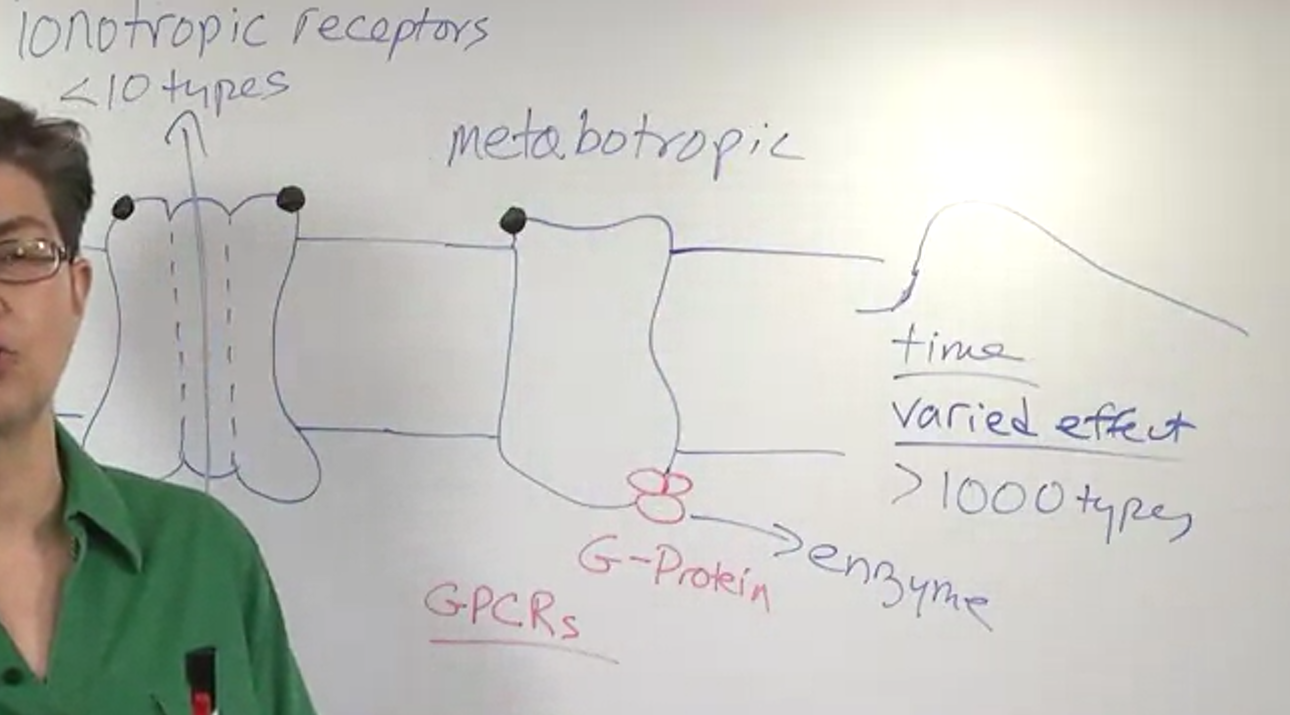
Two Types of Synaptic Receptors: Decoding the Signal
This lecture dives into the two main classes of synaptic receptors: ionotropic and metabotropic.
[[Ionotropic Receptors]]:
- Function: Act as ligand-gated ion channels.
- Mechanism:
- Bind neurotransmitters, causing a conformational change.
- Open a pore through the membrane, allowing specific ions to pass.
- Generate a rapid (millisecond) electrical response in the postsynaptic cell.
- Examples: Glutamate receptors (excitatory), GABA receptors (inhibitory)
[[Metabotropic Receptors]]:
- Function: Signal through G proteins, leading to diverse cellular effects.
- Mechanism:
- Bind neurotransmitters, activating G proteins.
- G proteins trigger secondary messengers (e.g., enzymes) to produce various effects.
- Can modulate ion channels, gene transcription, or other cellular processes.
- Characteristics:
- Slower response (milliseconds to minutes) compared to ionotropic receptors.
- More diverse and widespread (>1000 types).
- Can have long-lasting effects due to signal amplification.
- Examples: Mu opioid receptor (targets of painkillers like hydrocodone), various receptors for autonomic nervous system drugs (Glaucoma, asthma, etc.)
Key Differences:
| Feature | Ionotropic Receptors | Metabotropic Receptors |
|---|---|---|
| Function | Ligand-gated ion channels | Signal through G proteins |
| Response time | Milliseconds | Milliseconds to minutes |
| Number of types | Less than 10 | More than 1000 |
| Effect on ion channels | Direct | Indirect (through second messengers) |
| Examples | Glutamate receptors, GABA receptors | Mu opioid receptor, many autonomic nervous system drug targets |
drive_spreadsheetExport to Sheets
Real-world Examples:
- Knee-jerk reflex: Involves ionotropic receptors, resulting in a fast, short-lived response.
- Adrenaline release: Mediated by metabotropic receptors, leading to a slower, longer-lasting response.
Importance in Drug Development:
- Many drugs target G-protein coupled receptors (metabotropic) due to their widespread presence and diverse functions.
- Examples: pain medication (hydrocodone), drugs for various conditions (Glaucoma, asthma, etc.).
Conclusion:
Understanding the differences between ionotropic and metabotropic receptors is crucial for comprehending the diverse effects of neurotransmitters and the mechanisms of action of many drugs.